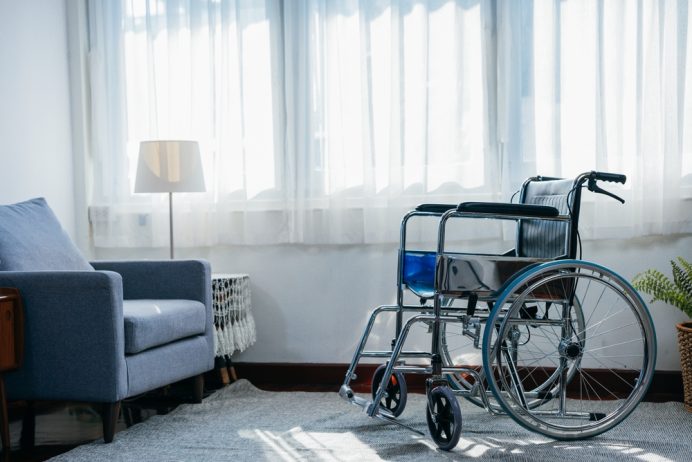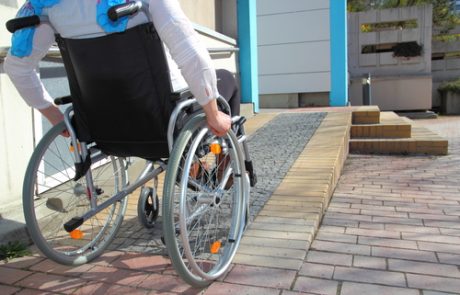A catastrophic injury patient will often soon realise that their current home is not going to be suitable for them. Ben Townsend, Head of Personal Injury Leeds, examines what factors a catastrophically injured person should consider if their home no longer meets their needs after their accident. This article was first published in the November / December 2024 edition of Inclusive Design magazine.
Depending upon their injuries, the patient may face a prolonged period in hospital. The nature of their injuries and their long-term prognosis may not be apparent at the outset, but the need to move will be.
If they have a compensation claim, they may be able to include the purchase of alternative, adapted accommodation as part of their claim. However, what should they do about their accommodation if they are discharged from hospital within a few months of receiving their injury?
The role of the solicitor
When an injured person has a claim, it is important at an early stage to instruct a specialist solicitor who has experience of guiding injured people through accommodation issues. If the injured person does so, the solicitor can immediately start assembling the evidence required to justify the move to new accommodation. They can also begin discussions about the strategy and funding of new accommodation with the defendant or the defendant’s insurance company.

The problem with purchasing
If the injured person requires a new property, they will often consider purchasing. There are three main advantages to purchasing accommodation:
- More properties to choose from.
- Long-term certainty that the purchased property will be available to the injured person for the rest of their life.
- Freedom to adapt and alter the property, subject to planning permission and building regulations.
However, purchasing and adapting accommodation can be a long process. Among the steps that need to be taken are:
- Identifying an appropriate property to purchase.
- Obtaining confirmation from the rehabilitation team that the property meets the injured person’s needs.
- Making an offer on the property and negotiating the purchase.
- Going through the conveyancing process to complete the purchase.
- Appointing a project manager to adapt the property.
- Agreeing a scheme for adapting the property.
- Tendering for a builder.
- Completing the adaptation works.
Even without complications in relation to securing money for the purchase and adaptation, this is still a long process. It can easily take more than a year, even though some of these steps will overlap. This sort of delay is often impractical for somebody waiting to be discharged from hospital.
The long-term needs of an injured person may not be sufficiently clear at an early stage to commit to the design and purchase of accommodation to last them a lifetime. For instance, before an injured person has experience of living in the community, it may be unclear whether their accommodation ought to allow space for two waking support workers to be present at night or one waking and one sleeping support worker (the latter requiring a room in which to sleep).
Modular pods
A possible short-term solution is a temporary modular adapted pod. These pods attach to an injured person’s existing property and offer one or two extra rooms. However, even if the property footprint contains space for a modular pod, they are unlikely to be suitable for catastrophically injured people as the remainder of their house will remain inaccessible to them. The rest of their property is unlikely to be suitable, even if it is adapted.
Renting
Often, a sensible intermediate step is for the injured person to move into rented accommodation directly from hospital. A six-month lease on a rented property is less of a commitment than purchasing and adapting a new property and can allow time for the injured person’s long-term prognosis to become apparent.
Rented accommodation may sometimes have adaptations for wheelchair users, but will often need basic adaptation. This expense will probably be recoverable as part of a compensation claim in addition to the cost of buying a property.
For instance, a tracking hoist may need to be installed, but some landlords will be unwilling to allow work on their property. A landlord may however be sympathetic to having that work done with a payment of six or 12 months of rent up front and a commitment to reinstate the property to its former condition after the injured person has left.
The injured person will probably have to compromise when renting a property, but that does not mean renting is a cul-de-sac for them. Renting can be an opportunity for the injured person to experiment with different equipment: they can then decide which items of equipment work for them and, therefore, the items their new accommodation needs to fit.
The experience of living in rented accommodation can inform decisions around choosing the property they will ultimately be looking to purchase and how it will be adapted. It can provide the time they need to consider the property they want to buy without undue time pressure.
Renting also helps to focus their mind on the things they can compromise on in their permanent accommodation and the features they simply cannot live without. It can be part of reintroducing them to making choices about their future when they may feel a large number of choices have been taken away from them by their injuries. For instance, an injured person may learn that they require access to a hydrotherapy pool at their property.
The experience of the injured person and those supporting and rehabilitating them may also provide significant evidence about their accommodation needs for the future.
Conclusion
In most compensation claims for catastrophically injured people, a period in rented accommodation may not just be a temporary stopgap. It may be an important staging post on the road to finding suitable accommodation that will last them for the rest of their life.


